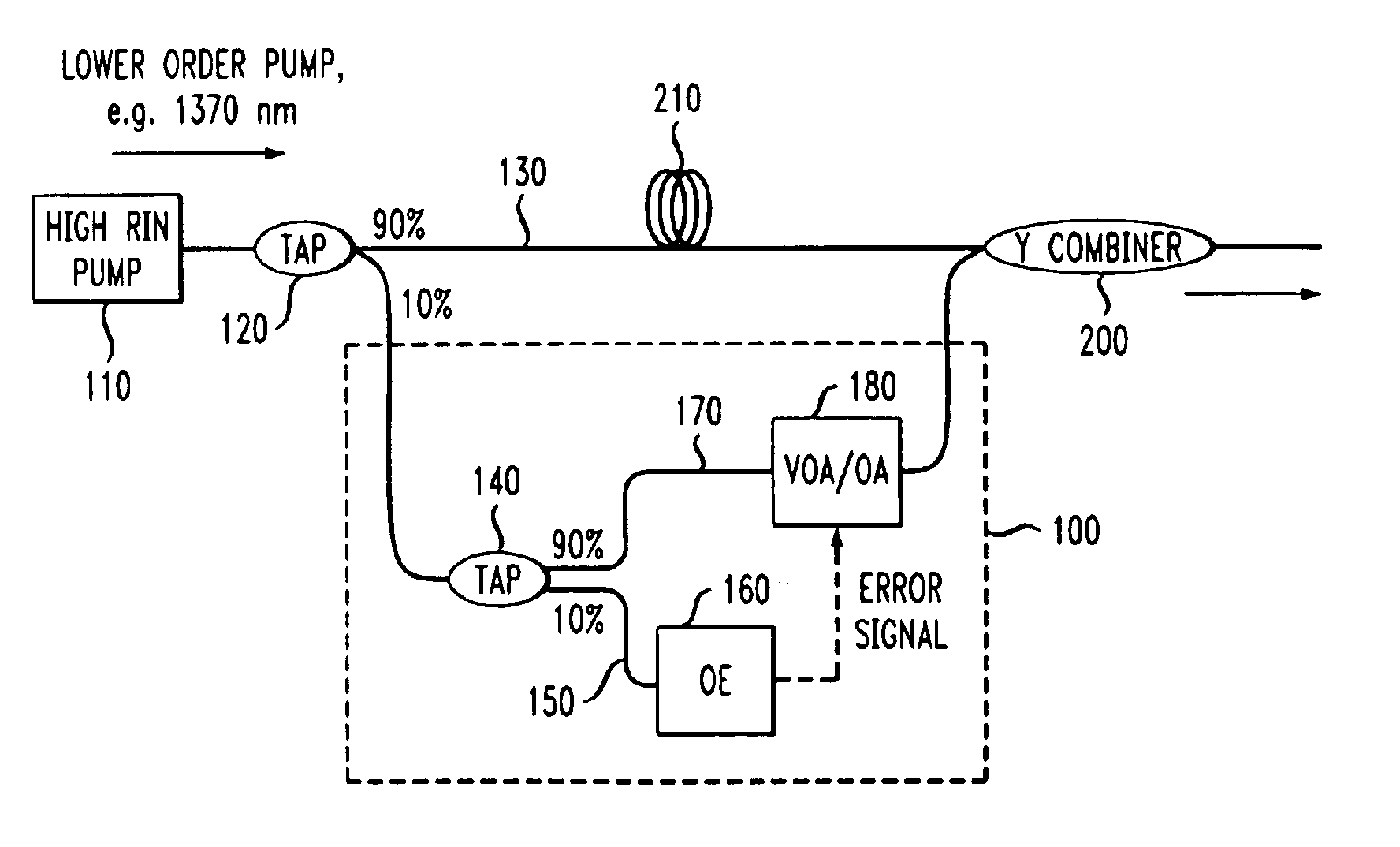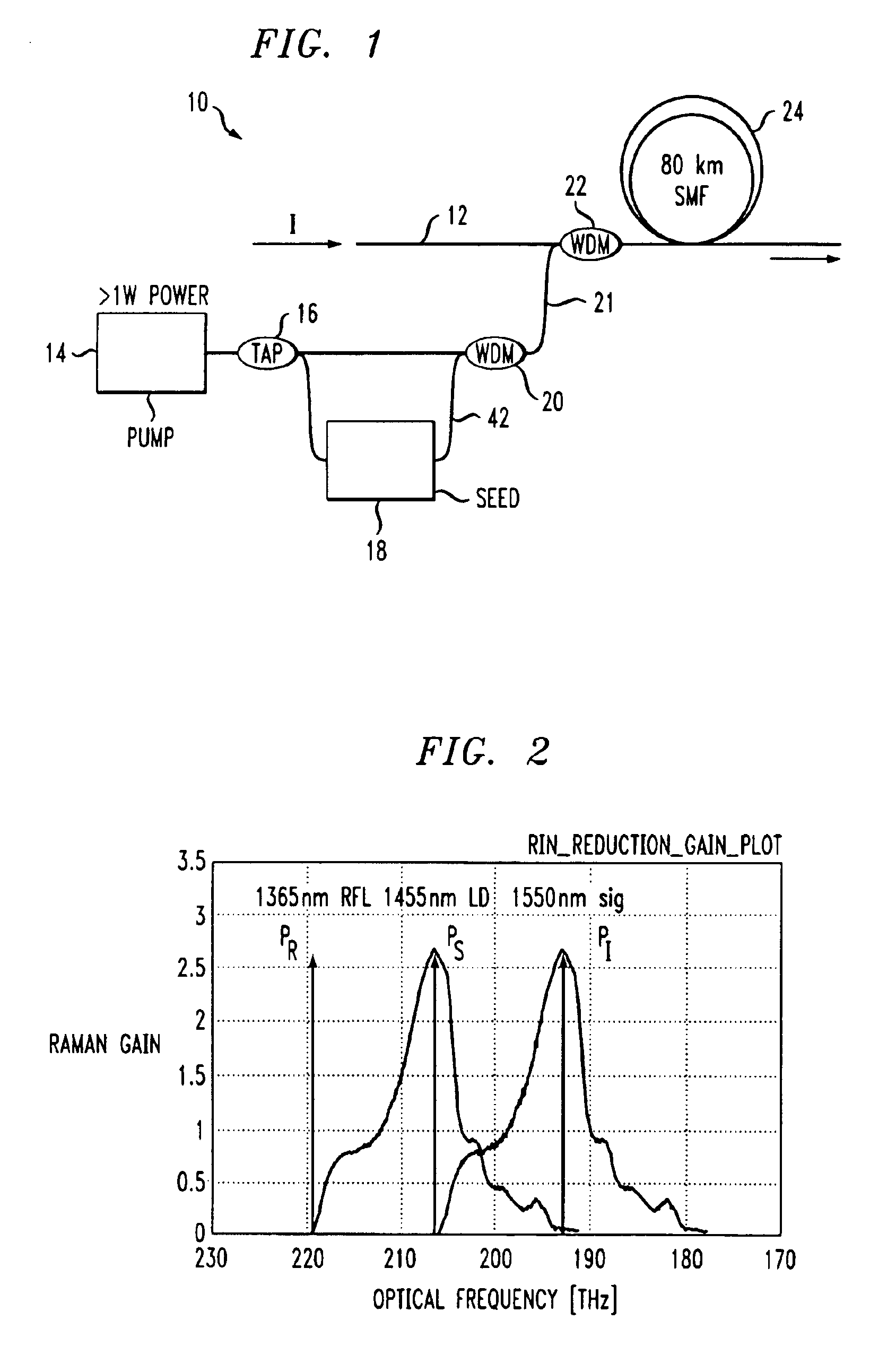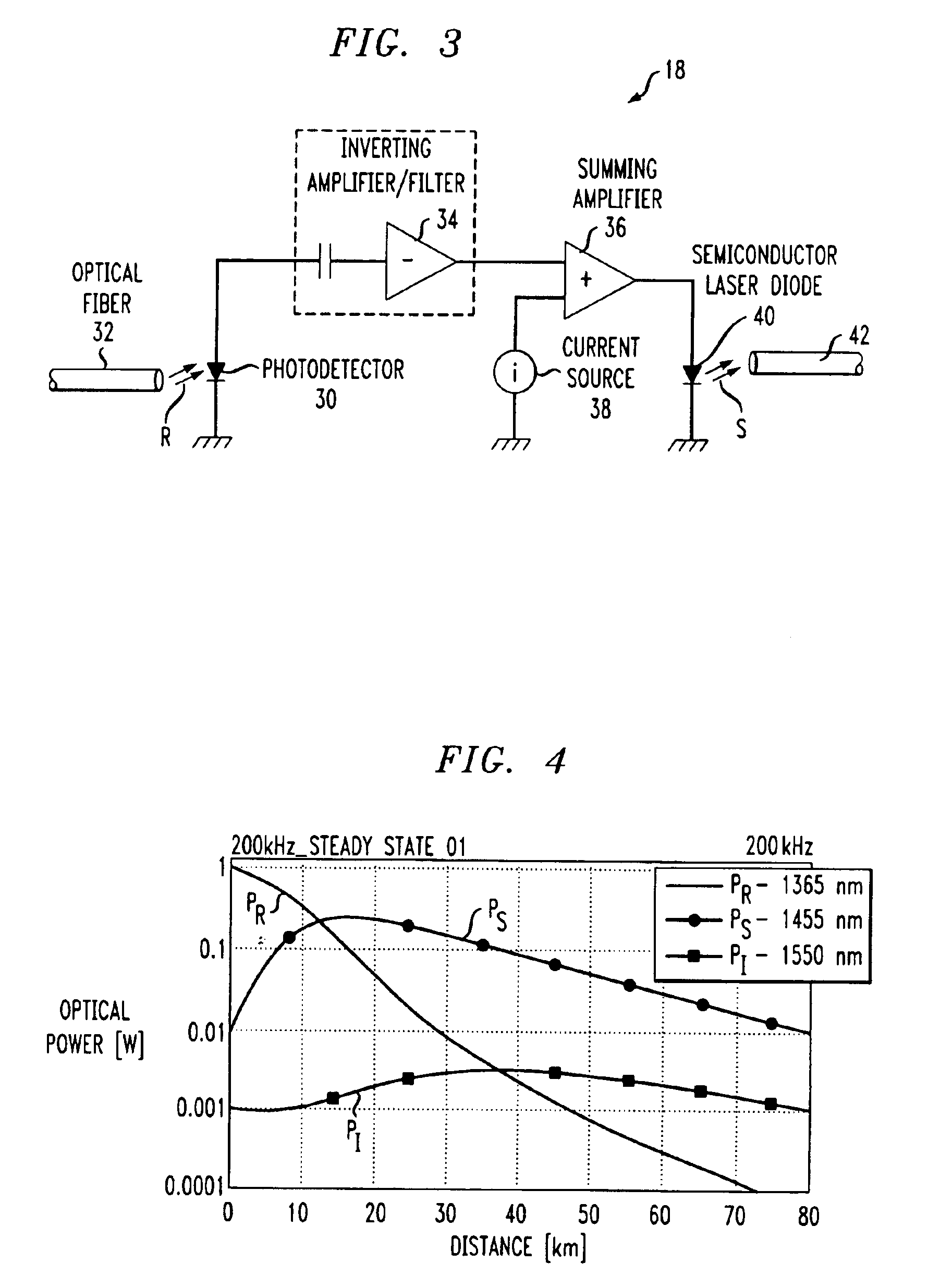Relative intensity noise (RIN) reduction in fiber-based raman amplifier systems
a technology of relative intensity noise and amplifier system, which is applied in the field oframan fiber amplifier, can solve the problems of high relative intensity noise (rin) level, inability to provide such power, and excessive rin transfer from the pump to the signal, etc., and achieve the effect of reducing the effect of relative intensity noise (rin)
- Summary
- Abstract
- Description
- Claims
- Application Information
AI Technical Summary
Benefits of technology
Problems solved by technology
Method used
Image
Examples
Embodiment Construction
[0030]An exemplary second-order co-pumping Raman fiber amplifier 10 formed in accordance with the present invention is illustrated in FIG. 1. As shown, amplifier 10 comprises a first optical fiber signal path 12, where the optical information signal I is applied as an input to first fiber signal path 12. A Raman fiber laser 14 is used to provide the high power, second order pump signal R for this arrangement. It is to be understood that the use of a Raman fiber laser as a pump source is exemplary only, and various other sources may be used to supply the relatively high power pump signal required for a second-order (or third-order) system, where the principles of the present invention are equally applicable to any such arrangement. An optical tap 16 is used to remove a portion of the output from Raman fiber pump laser 14 and apply it as an input to a low power, first-order (seed) laser module 18. As will be discussed below in association with FIG. 3, in contrast to conventional secon...
PUM
 Login to View More
Login to View More Abstract
Description
Claims
Application Information
 Login to View More
Login to View More - R&D
- Intellectual Property
- Life Sciences
- Materials
- Tech Scout
- Unparalleled Data Quality
- Higher Quality Content
- 60% Fewer Hallucinations
Browse by: Latest US Patents, China's latest patents, Technical Efficacy Thesaurus, Application Domain, Technology Topic, Popular Technical Reports.
© 2025 PatSnap. All rights reserved.Legal|Privacy policy|Modern Slavery Act Transparency Statement|Sitemap|About US| Contact US: help@patsnap.com



